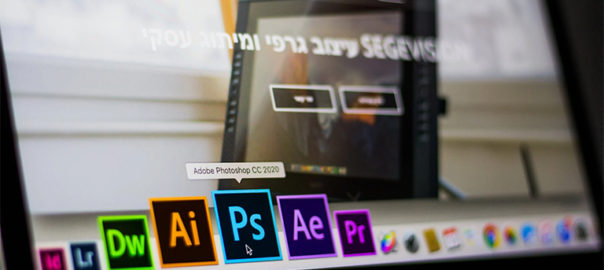In today’s world, where approximately 93% of the buying circles start on the internet, it’s critically important to maintain a high-performing website. And, you must realize that there are several factors which should be considered while trying to improve your website performance. For starters, your website must rank high in Google search to enhance your presence. The better you rank, the more is your web traffic and conversions. People think that only focusing on SEO will fetch them high rankings. Well, it takes more than just SEO. Your website also needs to be designed well, or you risk blowing away all the organic traffic.
SEO and web design go hand-in-hand more seamlessly than many people might realize. Their components mingle and flow together so well that, when executed correctly, your visitors should simply start navigating through your site, without actually noticing anything about what you have created.
So, what are those elements where SEO and web design collaborate? Let’s check them out.
1. Mobile-Friendliness
Anyone who’s even slightly familiar with SEO or web design should already know the importance of making your website mobile-friendly. Google made mobile-friendliness a ranking factor in 2015. It then introduced mobile-first indexing in 2017. It’s obvious how much importance Google gives to mobile-friendliness. Sill, a lot of websites don’t acknowledge the importance of creating a mobile-friendly website.
Read More About Mobile-First Indexing Here
The trend of searching has changed over the last decade or so. People are searching more on hand-held devices, especially mobiles, and searching less on desktops; the number is steadily increasing. More than 50% of all web traffic is driven by mobile devices, which means more than 50% of your audience is most likely to be accessing your website through mobile phones. Without a mobile-friendly website design, you could be unintentionally squandering half of your users. If your website has a high bounce rate due to not loading properly on a phone or tablet is going to send wrong signals to Google, and your rankings will tumble down.
2. Website Speed
We all know how important website speed is for the success of a business. People on the internet are impatient, and they want answers to their questions within seconds. If you haven’t been ranking well, it could be that your website is just too slow and people are bouncing quickly.
And, If your website loading speed is slow, you must know what’s slowing your website down? It could be something to do with your web design. Website speed is one of the most important aspects of technical SEO, and it’s a primary deficiency for many websites.
Ideally, your website should load in two seconds. When it takes longer than three seconds, half the users visiting your site are likely to abandon it. Page speed is more critical on mobile devices, where people are even less likely to spend time waiting. Web designers can consider various elements like image optimization, content suppression, CSS optimization, etc. to speed up the site.
3. Sitemaps
Web design can help with the crawling of your website in more than one way. A sitemap is a crucial element to have in place if you want search engines to be smarter about how they crawl your website. Your sitemap provides search engines with a guide of all the pages and content on your website. This gives you the chance to tell search engines what pages are most important to your site.
In addition to their benefit to search engines, sitemaps also aid in user navigation. A new visitor to your site can refer to your sitemap to get around it. Sitemaps also contain essential metadata about your web pages to give them a better chance of ranking highly.
4. Easy-to-Read Design
If you’ve been working on improving your SEO, you would have been focusing a lot on the content. Some people might not realize what a huge impact the design of a website can have on your content, or at least the presentation and structure of it. A poorly designed website can make it impossible for users to read the information on your website. Oddly placed content blocks, with a lot of hyperlinks, don’t serve a clear purpose.
At some point, you’ve probably been on a website that had a text that was impossible to read because of the page design. Maybe it was a light-colored text on a pure white background or a dark color on black. But the issue is not always color. The text may also be too big or small or written in a hard-to-read font. Like websites that aren’t mobile-friendly, sites that are difficult to read on any device or desktop are going to turn people away quickly.
Web designers understand how to create websites that make it easy for users to absorb your content, so you get the most for your money. White space, line length, and any extra elements such as images can all affect how people pay attention to your site. Also, remember to consider people with disabilities by going for an inclusive web design format.
5. User Experience and Trust
Unlike some other SEO factors, you really cannot measure how much people trust you or your website. However, gaining trust is still a huge part of getting your website to rank higher. There’s no doubt that most people are quick to form opinions, and once they have them, it can be challenging to change their minds. Over the years, we have gotten used to seeing perfected websites that provide phenomenal user experiences. This is what we naturally expect to see when we open a website. We want something clean, easy to navigate, and that can quickly give us the information we want. We tend to think these kinds of sites seem more trustworthy.
If a website looks old and outdated or is too difficult to use, most people will be left with a bad impression, and they could leave and not come back. You could have a product or service that might be exactly what they are looking for, but your website doesn’t convey this. A bad website will make it look like your business or organization simply doesn’t put in much effort.
Conclusion
Higher ranking in popular search engines is crucial, for which SEO is vital. But, not just SEO. If the best practices of website designing are carried hand-in-hand with best SEO practices, your website will become more efficient and perform better. Please speak to our web design experts for more details.











